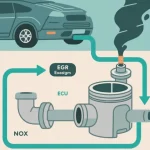Introduction
Property damage can happen suddenly, leaving homeowners and property owners with a complex insurance claim process. Understanding how the appraisal process works is essential for anyone who wants to ensure a fair and timely settlement. When disputes arise over the value of the loss, the appraisal process serves as a structured way to resolve such disagreements.
If you’re facing a property damage dispute—whether it involves your home or business—it’s important to understand the role of a CT insurance appraiser. These professionals help policyholders and insurers arrive at a fair valuation by providing independent opinions throughout the appraisal process. Navigating this process effectively requires careful documentation and an understanding of your rights under the insurance policy.
Initiating an appraisal can help break an impasse when there are disagreements about the damage amount, but it’s just one part of the broader claim process. Knowing how each step fits together ensures a smoother experience and helps avoid mistakes that could delay or reduce your compensation. Many policyholders wonder about the roles involved—such as appraisers and adjusters—and what sets them apart during a claim.
Initiating the Appraisal Process
The appraisal process typically begins when one party—the policyholder or insurer—invokes the appraisal clause in the insurance contract. This formal step is usually taken when there’s a clear disagreement about the dollar amount of the loss, rather than the existence of coverage. It requires a written demand that specifies the disputed items and any areas of concern regarding damages.
The insurance appraiser vs adjuster distinction becomes important at this stage. While the adjuster is responsible for investigating the loss, documenting damages, and determining the initial claim value, the appraiser steps in when there’s a disagreement about that valuation. Each party selects its own appraiser to assess the damage and independently estimate repair or replacement costs. If the two appraisers cannot agree, a neutral umpire is appointed to make a binding decision.
Selecting Appraisers and an Umpire
After the appraisal clause is activated, each party selects a qualified and impartial appraiser. These appraisers act independently on behalf of their respective clients but are expected to approach the task objectively and accurately. Their first collaborative task is to agree on a neutral umpire. If the two appraisers cannot agree, a local court may be asked to appoint an umpire to ensure fairness.
Together, this three-person panel is responsible for analyzing evidence and, if necessary, settling disputes by majority vote. As they work through the evidence, the ultimate goal is to reach a consensus on damages’ value—avoiding unnecessary litigation and expediting the claims process.
Unlock smarter strategies—this related post gives you ideas to act on today.
Conducting the Damage Assessment
Inspection and assessment form the core of the appraisal process. Each appraiser independently inspects the damaged property, gathers evidence, and meticulously documents their findings. Effective assessments generally include:
- Capturing photographs from multiple angles to show the scope and severity of the damage.
- Preparing a full inventory of lost or destroyed property items, including high-value and everyday contents.
- Collecting receipts and estimates for past emergency repairs or temporary fixes.
This diligence ensures the process isn’t derailed by missing documentation. Reliable, well-organized evidence will be the backbone of a successful property damage claim. The insurance industry strongly advises property owners to be involved during this phase, reviewing what’s being documented and understanding the measurements or repair estimates used.
Evaluating and Estimating the Loss
With all evidence documented, both appraisers independently estimate the damage’s actual cash value or replacement cost. Major valuation considerations include property location, structural condition before the loss, local building costs, and comparable sales or estimates from reputable contractors.
At this stage, the appraisers typically examine and discuss any significant discrepancies between valuations, with both parties making their case for higher or lower values. These discussions allow for negotiation before bringing unresolved items to the umpire’s attention.
Reaching an Agreement
If the two appraisers can agree on the amount of loss, their decision becomes binding and sets the payout. If they still differ after reviewing all the evidence and discussing their findings, the previously chosen umpire steps in. The umpire reviews evidence on any unresolved issues and makes a final determination.
The final appraisal award is valid when at least two of the three parties (either both appraisers or one appraiser and the umpire) agree. This mechanism ensures objectivity and helps prevent one-sided decisions, providing both parties a transparent resolution to the dispute.
Finalizing the Settlement
Once the appraisal award is finalized and signed, the insurer must promptly pay the awarded sum for the covered damage, minus the policyholder’s deductible. Insurance companies typically have a specific window—often 30 days or less—to complete payment, ensuring claimants do not endure unnecessary delays after a lengthy process.
The appraisal award is binding for the value of loss but does not change the terms of coverage. If the claim covers damages not included in the policy’s scope, or if fraud or misrepresentation issues arise, those concerns will need to be resolved separately.
Post-Appraisal Considerations
While the appraisal process resolves disagreements about the loss amount, coverage disputes—such as what’s covered, deductibles, and exclusions—remain under the insurer’s authority. If an insurer unreasonably delays payment, denies valid claims, or acts in bad faith, policyholders may need legal advice or further action of property damage.
Final Thoughts
Mastering the appraisal process is vital for any property owner to achieve a fair settlement during an insurance claim. By gathering comprehensive documentation, selecting neutral appraisers, and understanding the process, you can confidently advocate for your interests and ensure the appraisal is resolved swiftly and justly.
Keep your edge—explore more insights designed to inspire and guide you.







